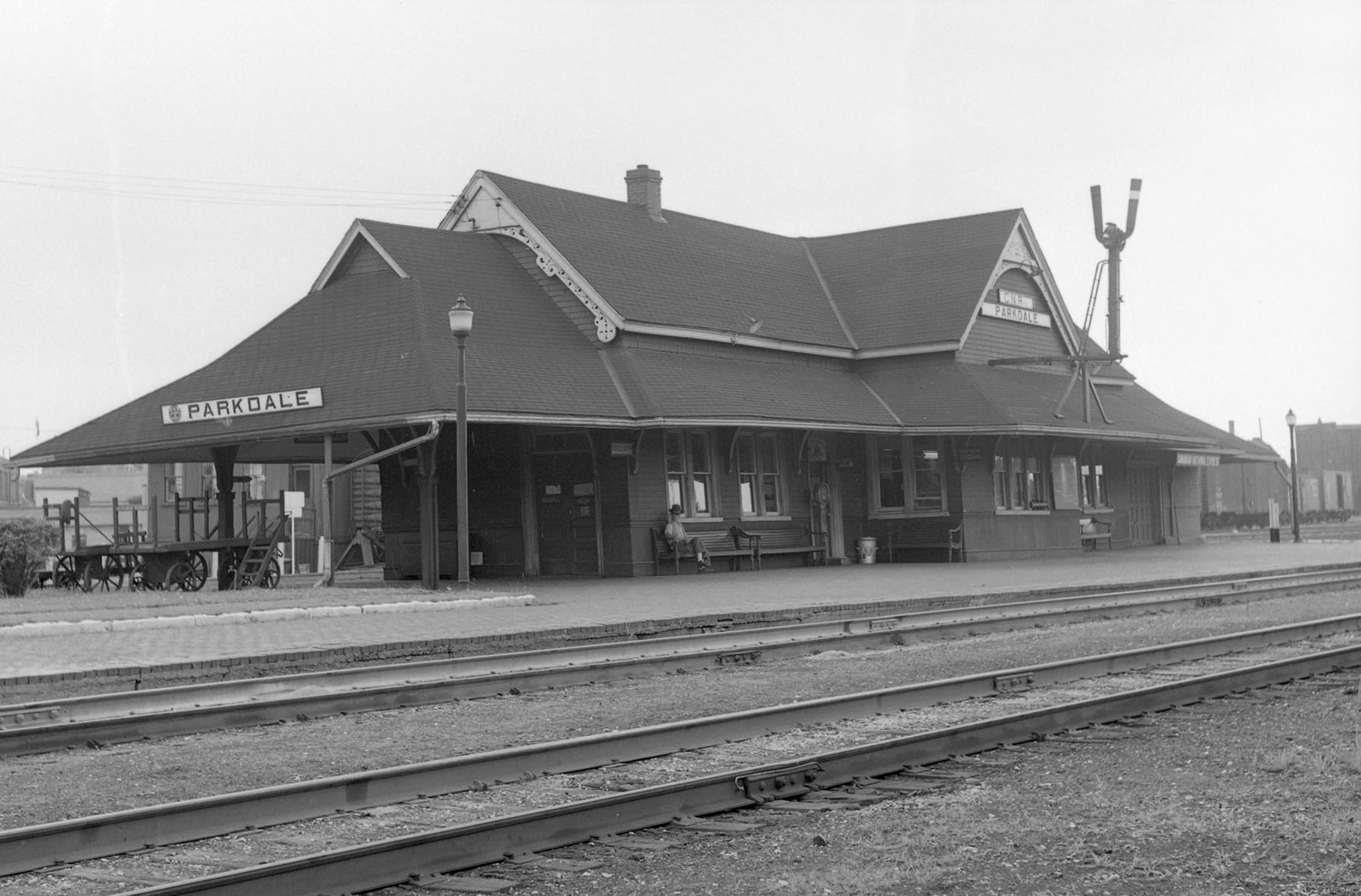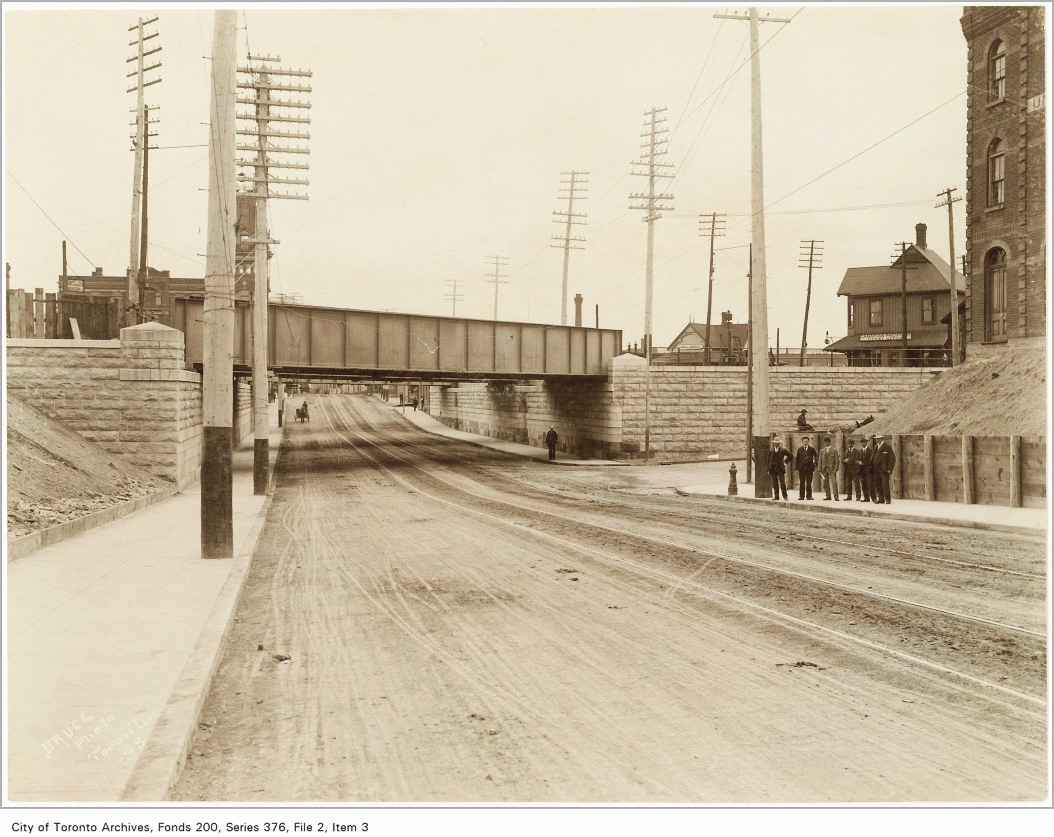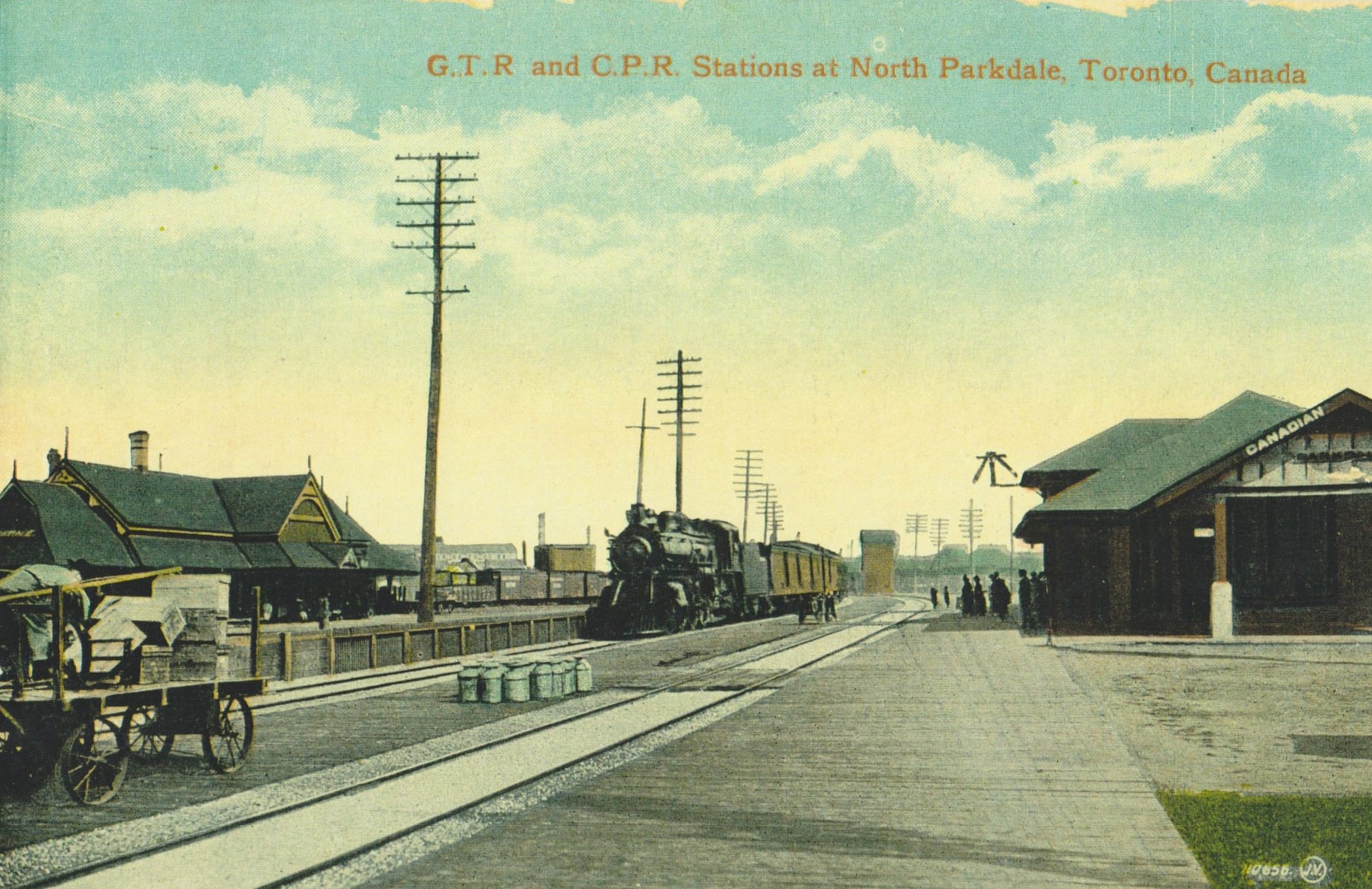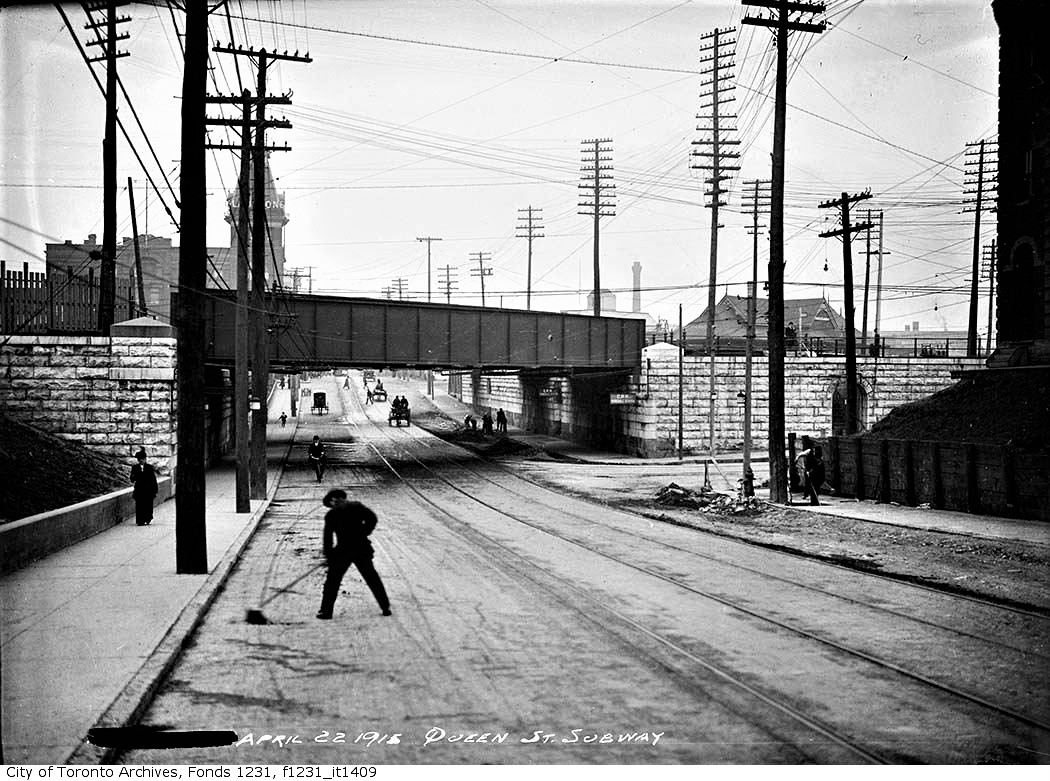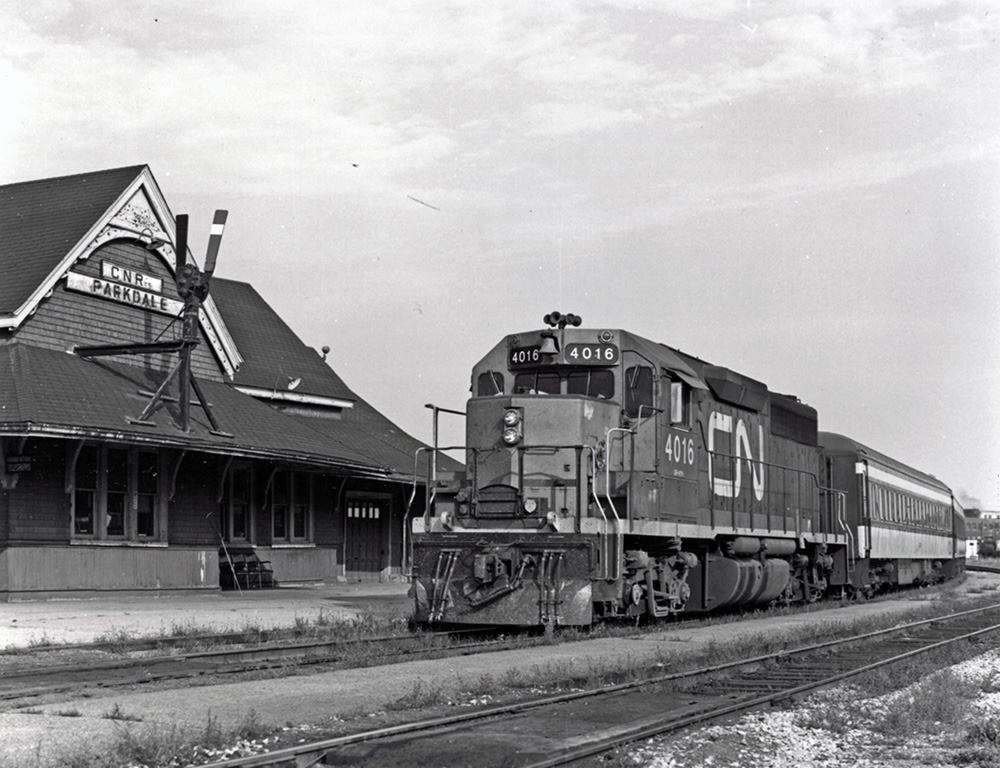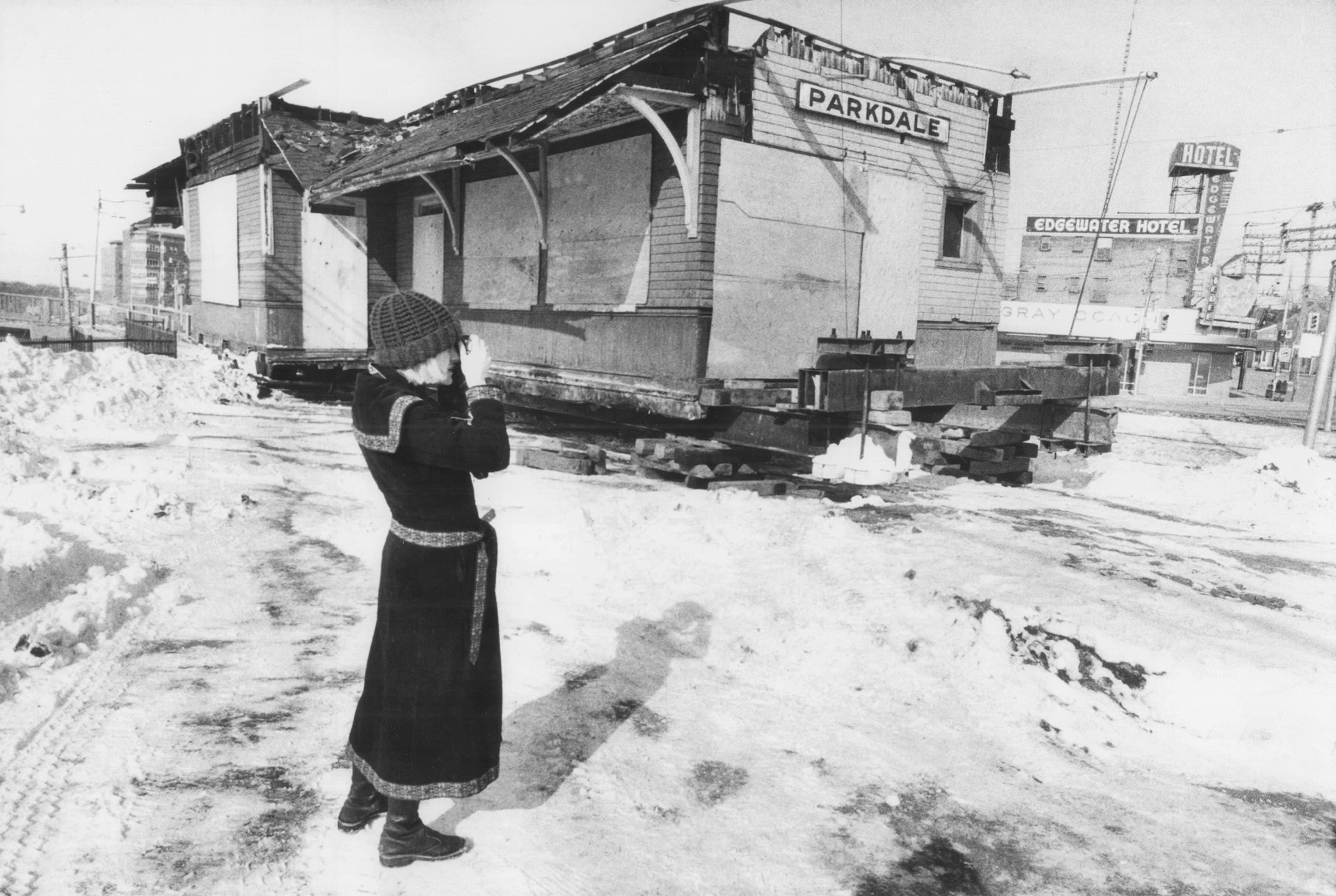Summary
While the Ontario, Simcoe & Huron Railway (later called the Northern Railway of Canada) did pass through what is now Parkdale upon its opening between Toronto and Aurora in May 1853, it would be another 25 years before Parkdale would have a passenger station of its own. The local population was too small to justify one at the time, though it began to rapidly increase as suburban areas west of Toronto expanded and more railways passed through it. The Grand Trunk Railway laid its rails parallel to the Northern Railway through Parkdale in 1855, followed by the Great Western Railway which straddled the lakeshore later the same year. Neither of these railways immediately opened passenger stations in Parkdale either. No new railways entered Parkdale until over a decade later when the narrow-gauge Toronto, Grey & Bruce Railway laid a third rail inside the existing rails of the broad gauge Grand Trunk line between Toronto and Weston. This remained the case until 1875 when increased rail traffic necessitated the TG&B establish its own right-of-way parallel to the Grand Trunk between those two points.
It’s likely that a combination of factors led to the construction of the first train station in Parkdale. The surrounding community’s population had now grown to just under 800 residents, not especially large but perhaps enough to deem worthy of a station. Simultaneously, the Credit Valley Railway began construction in 1874 with the goal of reaching Toronto through Parkdale. To do this it would need to share the same corridor occupied by the Toronto, Grey & Bruce, Northern Railway and Grand Trunk Railway, something which the latter two railway companies were fundamentally opposed to. The Northern Railway of Canada opened its Parkdale Station in 1878, though its odd position perpendicular to the tracks is believed to have been done to block the Credit Valley Railway from advancing past that point. The Credit Valley’s president, George Laidlaw, made an accusation to that effect in a petition to the Governor-General of Canada in 1879. Regardless of whether that was the case or not, the Credit Valley Railway was able to secure land to the immediate west and opened their own station opposite the Northern Railway station later the same year.
Due to numerous renovations and expansions over the years it’s unknown exactly what the Northern Railway’s Parkdale Station looked like originally. Shortly after its opening, the Northern Railway of Canada merged with the Hamilton & North-Western Railway into the Northern & North Western Railway in 1879. About the year 1885 the station was finally reoriented 90 degrees to position it parallel to the tracks. The station changed hands when the Grand Trunk Railway gained control of the Northern & North Western Railway in 1888. The Gladstone Hotel, which remains a local landmark, was built the following year with the goal of catering to passengers using both railway stations nearby. After Queen Street was lowered beneath the tracks in 1898, a stairwell was built for passengers to reach the former Northern Railway station from street level. The station was enlarged one final time by the Grand Trunk Railway during the early 1900’s.
Parkdale Station quickly gained importance as the population of Toronto’s west end increased. During the Northern & North Western era the station saw a total of six trains from that railroad each day, four of which were passenger trains while the remainder were exclusively mail trains. The Grand Trunk Railway also had as many as twelve trains stop at this station per day during that time, which was likely made possible through its tracks being on the opposite side of the station from that of the Northern Railway. This number likely increased once the Grand Trunk initiated commuter train service between Toronto and Weston in 1887. On Grand Trunk timetables this station appeared as North Parkdale to differentiate it from South Parkdale Station – which previously belonged to the Great Western Railway until it was merged into the Grand Trunk in 1882. The North Parkdale name was made official once the station came under ownership of the Grand Trunk and this remained the case until the name was reverted in 1911. After the financially ailing Grand Trunk was nationalized and merged into Canadian National in 1923, passenger service to the station remained stable. A total of 15 passenger trains stopped at Parkdale each day in 1925, increasing to 23 trains per day by 1959. This is where service would peak as passenger ridership began to significantly decline during the post-war era. Service was reduced to just eight trains per day by 1974, and most of these trains used CN’s fleet of Budd Rail Diesel Cars as an economical alternative to conventional diesel-powered passenger trains.
Despite its declining importance, local community members recognized the station’s historical significance. The departure of troops from this station in 1885 to quell the Northwest Rebellion was re-enacted in a scene of “The National Dream”, a TV miniseries that aired on CBC in 1973 using the same station as the film location. After it became clear that the station was surplus to the railway’s needs, an organization called the Parkdale Save Our Station Committee was formed to raise money to relocate the station and turn it into a railway museum. The group was successful in their efforts, having moved the station to the Roncesvalles area in 1977. Tragically, the station was engulfed in flames on October 17th of that year after a trespasser dropped a lit cigarette inside. The burned-out husk that remained was dismantled shortly thereafter, just short of 100 years since it was first built. Today, the station’s original location is occupied by Sudbury Street and a sealed entrance that once led to the platform is still visible from Queen Street beneath the rail corridor.
The proposed King-Liberty GO Station, to be built under the SmartTrack Stations Program, will be located approximately a half kilometre to the southeast of where both Parkdale Stations used to be. Upon its expected opening in 2026 the new King-Liberty GO will return direct passenger rail service to this part of the city for the first time in 50 years.
Condensed Station Info:
| Location: | Served By: | Current State: | Date Built: | Date Demolished: |
| Queen Street at Gladstone Avenue | NRC (1878 – 1888) GTR (1888 – 1923) CNR (1923 – 1976) | Demolished | 1878 | 1977 |


